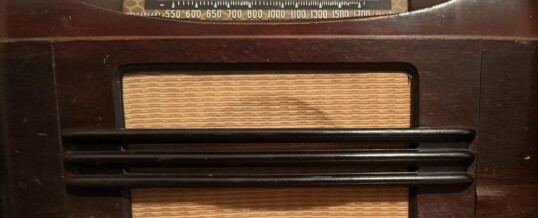
My father used to talk about radio programs a lot. The Lone Ranger. Lum and Abner. Amos and Andy. Edgar Bergen. People tend to talk about things they like. And he liked the old radio shows. He said he would have kept listening to them, but they took them away from him.
As radio gave way to television, those shows either faded away or found a new home in the visual medium.
A handful of radio programs were still on the air when my sister and I came along, but truthfully, we were some of the first TV kids. For Baby Boomers, Top 40 radio had taken the place of mystery, action, and comedy shows. But, some of those radio programs did make the transition from the old Zenith console radio to the new RCA console television. Red Skelton and Ed Sullivan are two examples.
Skelton’s Clem Kadiddlehopper, Gertrude and Heathcliff, and the wide array of talent on Ed Sullivan’s Sunday night show were two of the holdover programs that my sister and I enjoyed. We were lucky to be able to watch these and other programs, because early on, televisions were expensive.
When I was born, there were still quite a few folks who didn’t have a television, but my family did. Almost all-new technology is expensive. When radio debuted in 1920, a good set could cost the equivalent of $3,000 in today’s money.
Same was true for TV. In 1966, a 25-inch color television was priced at what would be around $4,600 today. Not coincidentally, this was also about the time payment plans became a commonplace offering, and that’s how most folks acquired such things. Lay-A-Way or you paid it out at Sears on credit.
Sitting in the living room of the red brick house in Ashdown, Arkansas, I could position myself so that I could see and hear the TV, as well as catch just about everything that was happening up and down Beech Street.
The mail lady (Yes, we had a mail lady, not a mailman. Ashdown was ahead of its time.) would arrive when Days of Our Lives was on. The mosquito truck sprayed the summer air during the KTBS 3:30 Afternoon Movie, and Huntley-Brinkley would bring us the NBC News broadcast just as my dad rolled up in his 1952 Chevrolet pickup after an hour drive from Red River Army Depot.
Before we knew how to tell time, my sister and I knew what time it was by what was on the television. When Captain Kangaroo came on, it was time for breakfast (Captain Kangaroo and Cap’n Crunch went hand-in-hand). The midday report was a sign that we’d soon have lunch. Mom’s soap opera meant the mail lady was on her way. The 3:30 Movie told us that the older kids in the neighborhood were out of school. And Star Trek coming on meant that we were headed to bed.
Too bad the VCR was another 15 years in the future.
Later, when I went to work in the radio business in the 1970s, the old radio shows had begun to make somewhat of a comeback. You could hear brand new radio mysteries with the CBS Mystery Theater, which began airing in 1974, some 12 years after the last regular radio drama ceased.
In 1980, the Mutual Radio Network aired the Mutual Radio Theater. It only aired that year, but during its run, there were new shows five nights a week. Some of the hosts included Lorne Greene, Andy Griffith, Vincent Price, Cicely Tyson, and Leonard Nimoy. Many of the actors on the show had worked in the original radio dramas.
And just as I had gotten hooked on them, they ended. I would’ve kept listening to them, but they took them away from me.
Thankfully, many of the original radio shows, including the CBS Mystery Theater and the Mutual Radio Theater, are now available online. As are many of the old classic TV shows.
Hearing and watching them brings me some great and wholesome entertainment. And just a little bit closer to my dad.
©2024 John Moore
John’s books, Puns for Groan People and Write of Passage: A Southerner’s View of Then and Now Vol. 1 and Vol. 2, are available on his website TheCountryWriter.com, where you can also send him a message.
NOV
2024
